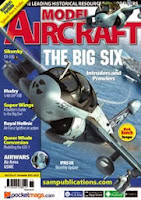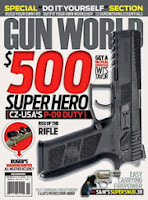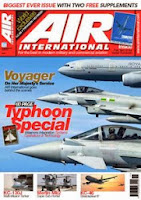A year ago the fighting in Libya that was to see the downfall of the Gadhafi regime in Tripoli was moving to its conclusion in Libya. In October 201I, the final remnants of the Gadhafi supporters were hanging on by a thread in a small number of locations in southern and central Libya, emboldened by their tribal connections to a regime whose hold on power was becoming increasingly tenuous. Then, with the full military might of the NATO alliance and its coalition allies, it was only a question of time before the insurrection would see a new government formed in Tripoli. The images of Libyan tanks and armoured personnel carriers being systematically targeted and destroyed by a United Nations authorised campaign proved just how far the application of air power had moved since World War Two. Air power had shown the versatility to be applied both in its hard and soft forms. In a 21st century where media images of dead women and children can cause public support for military interventions to evaporate in an instant, this was important.
Thursday, October 24, 2013
Jets 01-02/2013
After a busy few months travelling and moving house, I've enjoyed a fairly relaxing time over the last few weeks, settling into my new office/study and getting acquainted with the village. We are now situated under the flightpath for East Midlands and during the evenings all manner of transport aircraft ply their trade in and out of Castle Donington. The droning turboprops and rumbling jets make a pleasant (to me, at least!) comparison to the whisper-quiet airliners that frequent the airport during the daytime hours. Their dwindling numbers has prompted me to get out and about to try and see as many of these types before they disappear from our skies completely. They may be noisy and inefficient, but they still hold a sense of historical importance and I feel it important to capture them on film before it's too late. I guess this sense of nostalgia has also been triggered by researching the article on the Jet Preservation Pioneers (page 18) and trawling through my photograph collection to help illustrate it. Although I am too young to remember Ormond Haydon Baillee (OHB) and Spencer Flack's Hunter (although I did see him race his Beech Baron to dramatic effect), I distinctly remember being invited to Cranfield as a 13-year-old to enjoy a day with Sandy Topen s Vintage Aircraft Team. I got to crawl all over the Vampires and Venoms and while the photographs are too poor to illustrate this magazine, they brought back many happy memories.
Scale Aviation Modeller International 11/2013
This is a very welcome re-release of Revell's Voodoo, previously issued with USAF or Canadian options. This version features two Air National Guard aircraft. The kit comes in an end-opening box containing three large light grey sprues, one transparent sprue, a packed, colourful decal sheet and a six-page instruction booklet. All the mouldings look crisp and well detailed, with fine recessed panel lines. The McDonnell F-101 Voodoo was originally designed by as a long-range bomber escort SAC, but was instead developed as a nuclear-armed fighter-bomber for the Tactical Air Command and as a photo-reconnaissance aircraft based on the same airframe. Extensively modified versions were produced as an all-weather interceptor aircraft, serving with the Air Defense Command, the Air National Guard, and the Royal Canadian Air Force. The RF-101 reconnaissance variant was instrumental during the Cuban Missile Crisis and saw extensive service during the Vietnam War. Interceptor versions served with the Air National Guard until 1982, and in Canadian service they were a front line part of NORAD until their replacement with the CF-18 Hornet in the 1980s.
Model Aircraft 11/2013
From 1945 until September 1949 the postwar Royal Hellenic Air Force was engaged in a bloody conflict that erupted between Greek communists and the Hellenic Armed Forces after the German retreat from Greece. During this period the Spitfires and their pilots battled on constantly... While World War II was about to end in most parts of Europe, bringing peace and prosperity, this was not the case with Greece, which was about to enter a new phase of fraternal bloodshed. Since October 1944 the German occupation forces had been retreating from western Greece to act as reinforcements against the Allied invasions in Normandy and Italy. After the last German soldier left from Athens, fleeing northbound, during November 1944 a political vacuum opened up. The Greek government in exile and the Royal family, that were supposed to take charge of Greece, were undermined by the Greek pro-communist guerrilla groups. These had grown strong in the rugged mountainous terrain of mainland Greece, harassing the Wehrmacht units based there under the German occupation. During WWII British Commando forces helped these groups with ammunition, weapons and support to continue a campaign of sabotage against the German infrastructure. Following the liberation, as the Wehrmacht was commencing its slow retreat, these groups demanded a more liberal government, with themselves in charge, instead of the Government in exile. After a clash with Greek security forces in Athens in December 1944, the communist groups literally conquered Athens and brought chaos to the civilian population. The British Forces (Ark Force) under the orders of General Scoby and Wing Commander Geofrey W.Tuttle (AOC RAF) took the matter in hand.
Gun World 10/2013
The term "assault rifle" is derived from the German word "Sturmgewehr," which translates literally as "storm rifle," but which idiomatically refers to an assault or attack. Quite fittingly, most arms historians trace the development of today's assault rifles to the German Sturmgewehr 44, a design produced in substantial numbers late in World War II. Among the features of the Stg 44 that have been incorporated into its successors are 1) the ability to fire full or semi-auto, 2) an intermediate power cartridge between those used in SMGs or those used in infantry rifles of the time, and 3) a detachable box magazine. Assault rifles tend to be more compact than traditional rifles, and this allows them to be used more effectively in mobile warfare. The post-war transfer of German engineers to Spain influenced the development of another assault rifle that employed the Stg 44's roller locking system—the CETME—that in German service would become the G3. Strictly speaking, the G3 might be termed a "battle rifle" as it fired the full-power 7.62x51 mm NATO round. Today, the term "assault rifle" usually incorporates battle rifles.
Britain At War 11/2013
THE OCTOBER issue of Britain at War Magazine featured the Tip and Run raids endured by Britain's coastal towns and villages. This special section prompted a surprising amount of feedback from readers, a small part of which is reproduced in this month's Field Post. Such a response made me realise, or more accurately, reminded me, that during the Second World War everyone was in the front line, wherever they lived or wherever they fought. There is no doubt that for some the war was the most exciting time of their lives. Young men travelling to exotic locations at the government's expense, coupled with the camaraderie and the sense of purpose that warfare generates, may have made for a heady mixture. Similarly, some at home made a great deal of money out of the conflict. Always, though, there was danger, wherever a person might be. Nothing exemplifies this more than one of the articles in this issue about the saving of Norwich Cathedral in 1942 - see page 106. Everyday life in this lovely old building must have seemed as far away from the war as it was possible to be in Britain at that time. Yet one night in June 1942 the Luftwaffe came calling. With somewhere in the region of 15 to 20,000 incendiaries being dropped on the city in the space of just thirty-five minutes, fires spread everywhere.
Pacific Wings 10/2013
Boeing delivered the 223rd and last U.S. Air Force C-17 Globemaster III airlifter today, fulfilling the production contract more than 20 years after the first delivery. The aircraft left Boeing's Long Beach facility to fly to its assignment at Joint Base Charleston, S.C., where a ceremony will mark its arrival. The Air Force was the C-17's launch customer. Since the aircraft's first flight Sept. 15, 1991, it has been the world's only strategic airlifter with tactical capabilities that allow it to fly between continents, land on short, austere runways, and airdrop supplies precisely where they are needed. Boeing continues to produce C-17s for other customers around the world, and maintain and sustain the aircraft through the C-17 Globemaster Integrated Sustainmcnt Program. C-17s have been involved in contingency operations of all types, including flying troops and equipment to Operation Enduring Freedom in Afghanistan and to Operation Iraqi Freedom. The airlifter also has been used in humanitarian missions around the world, including the Japanese and Indian Ocean tsunamis of 2011 and 2004, respectively; Hurricane Katrina in 2005; and the Haitian earthquake of 2010.
Model Airplane International 11/2013
Airfix have opted to release the Mk I first and the box contains two sprues of about 70 parts and one clear sprue with another five parts, whilst the decal sheet is made by Cartograph and the instructions are in Airfix's current format. One aspect of these new Airfix kits that is often the cause of much debate is the varying quality and finesse of the surface detail, however in this kit I was more than satisfied because the panel lines and the fabric rendition are fine and restrained. The engraved lines are maybe just a little bit too deep but this does not matter once they are under a coat of primer and paint; but most importantly they are complete and consistent on all parts. The finely raised ribs and longerons make the fabric covered areas realistic plus there are various panels including the wing gun access panels that slightly protrude from the surface, although I think the rims on the fuselage sides are perhaps a little on the heavy side. It's my opinion, however, that Airfix didn't get right the look of the metal panel fasteners, doing them as rather heavy rivets with semi-round heads, which you are better sanding off.
Air International 11/2013
Eurofighters Typhoon is probably best known for its high-performance flight display routines seen by millions of people around world. The aircraft has been in service for over ten years and has participated in many of the world's most demanding training events: Red Flag in the United States, Anatolian Eagle in Turkey, the Tactical Leadership Programme at Albacete in Spain and its equivalent staged by the United Arab Emirates Air Force at AI Dhafra. The training undertaken in those events tends to focus on the air-to-air role and less on air-to-surface missions. Then, in the spring of 2011, RAF Typhoons were deployed to Gioia del Colle AB in southern Italy to enforce a UN-mandated no-fly zone over Libya to support NATO's Operation Unified Protector. Part of the way in to the air campaign, RAF pilots employed the jet in an operational air-to-surface role for the first time. It was a good demonstration of Typhoon's ability to conduct bombing missions in combat. The weapon employed throughout the campaign was the 1,0001b (454kg) Enhanced Paveway II laser-guided bomb, stablemate of the 1,000lb unguided bomb - the only two air-to-surface munitions currently in the RAF's multi-role Typhoon arsenal. After ten years of service and an even greater length of time in development, Typhoon seems somewhat under equipped for 'blowing stuff up', but not for much longer. When the Phase 1 Enhancement (P1E) package is released to service next year RAF Typhoon FGR4s will gain a very smart weapon: the 500lb (227kg) Paveway IV dual-mode, precision-guided bomb.
Subscribe to:
Comments (Atom)








